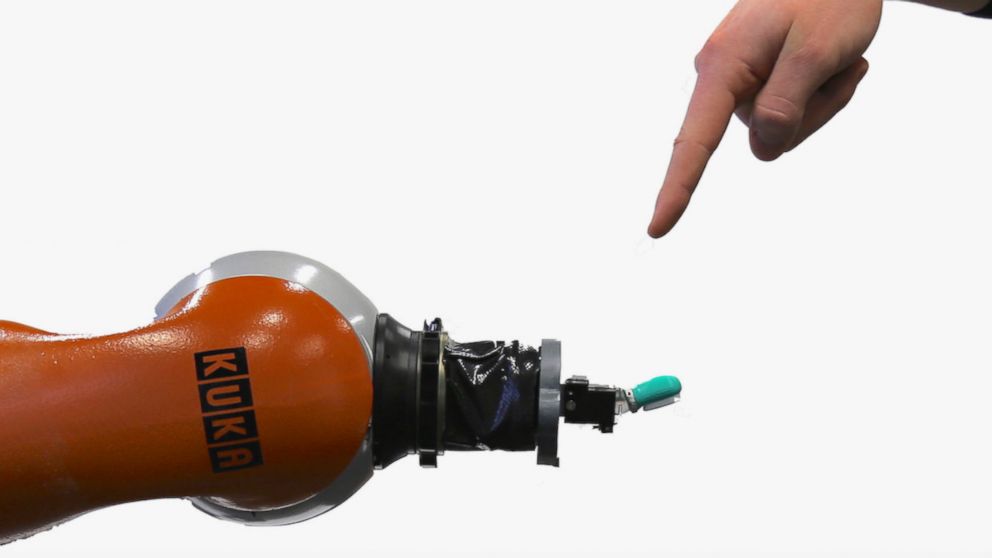This Robot Is Being Taught to Flinch as Though It's Reacting to Pain
They're becoming more human-like.

— -- Robots with emotion. Robots that can do our jobs. Robotic friends. Next up: Robots that can feel pain.
Researchers in Germany are developing an artificial nervous system that would teach robots to feel and react to pain, with the intent of helping them to avoid damage to their systems and warn their human co-workers, which could help prevent accidents.
A team of researchers from Leibniz University in Hannover, Germany, described their research at the IEEE International Conference on Robotics and Automation last week in Stockholm, Sweden.
In humans, neurons transmit pain. Artificial neurons in the robot would send the same signals, allowing it to determine the scope of the pain, from light to severe.
"Pain is a system that protects us. When we move away from the source of pain, it helps us not get hurt," Johannes Kuehn, one of the researchers, told IEEE Spectrum.
How the robot reacts is also key. Kuehn and his co-worker, Sami Haddadin, wrote in a paper published in IEEE Robotics and Automation Letters they used human pain research to understand how robotic reflexes could help protect the machines.
Using a tactile fingertip sensor that can feel temperature and pressure, the researchers developed a prototype reflex controller based on how human feel when they experience physical pain. When the force on the sensor passes a certain level, the robot receives alerts, the same way humans would when they experience pain. The robot can then use its protective reflexes.
It's only a matter of time before robots are practically human-like.




